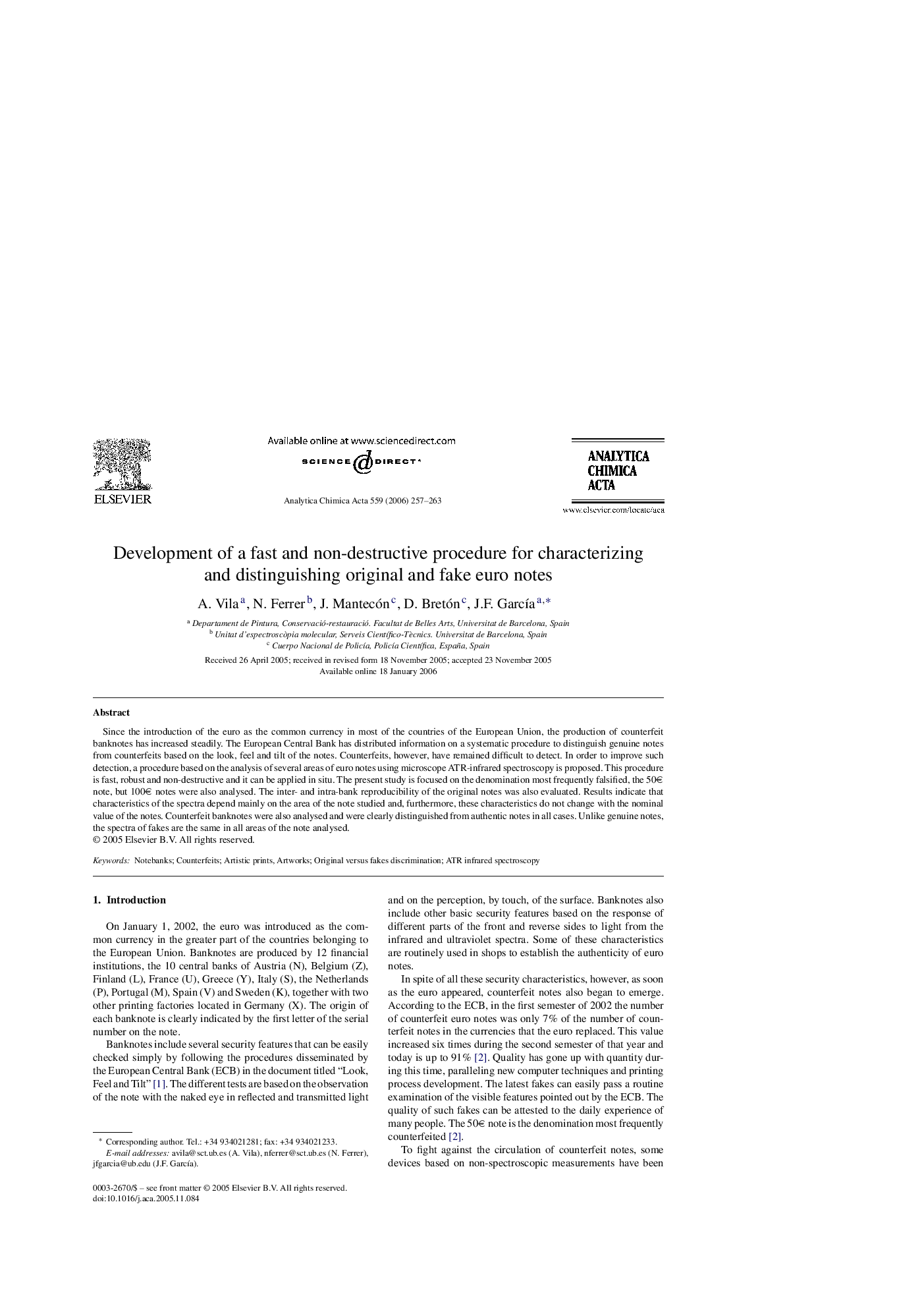| Article ID | Journal | Published Year | Pages | File Type |
|---|---|---|---|---|
| 1172475 | Analytica Chimica Acta | 2006 | 7 Pages |
Since the introduction of the euro as the common currency in most of the countries of the European Union, the production of counterfeit banknotes has increased steadily. The European Central Bank has distributed information on a systematic procedure to distinguish genuine notes from counterfeits based on the look, feel and tilt of the notes. Counterfeits, however, have remained difficult to detect. In order to improve such detection, a procedure based on the analysis of several areas of euro notes using microscope ATR-infrared spectroscopy is proposed. This procedure is fast, robust and non-destructive and it can be applied in situ. The present study is focused on the denomination most frequently falsified, the 50€ note, but 100€ notes were also analysed. The inter- and intra-bank reproducibility of the original notes was also evaluated. Results indicate that characteristics of the spectra depend mainly on the area of the note studied and, furthermore, these characteristics do not change with the nominal value of the notes. Counterfeit banknotes were also analysed and were clearly distinguished from authentic notes in all cases. Unlike genuine notes, the spectra of fakes are the same in all areas of the note analysed.
